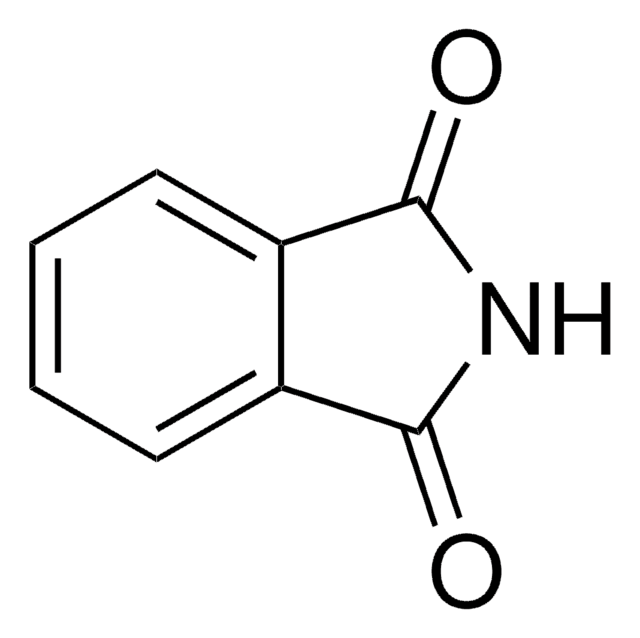225541
Diisopropyl azodicarboxylate
98%
Sinónimos:
DIAD, Diisopropyl azodiformate
About This Item
Quality Level
assay
98%
form
liquid
impurities
≤2% dichloromethane
refractive index
n20/D 1.420 (lit.)
bp
75 °C/0.25 mmHg (lit.)
density
1.027 g/mL at 25 °C (lit.)
storage temp.
2-8°C
SMILES string
CC(C)OC(=O)\N=N\C(=O)OC(C)C
InChI
1S/C8H14N2O4/c1-5(2)13-7(11)9-10-8(12)14-6(3)4/h5-6H,1-4H3/b10-9+
InChI key
VVWRJUBEIPHGQF-MDZDMXLPSA-N
¿Está buscando productos similares? Visita Guía de comparación de productos
General description
Application
- Chromenes resembling classical cannabinoids
- MK-3281 inhibitor of the hepatitis C virus NS5B polymerase
- Norbornene-based guanidine-rich polymers as mimcs of cell-penetrating peptides (CPP)
- Analogues of the Pseudomonas aeruginosa quorum-sensing molecule N-(3-Oxododecanoyl)-l-homoserine lactone with immunosuppressive but non-LasR-inducing properties
- Acceptor-donor-acceptor organic dyes for dye-sensitized solar cells
- 1,3-dioxane-2-carboxylic acid derivatives as PPARα/γ dual agonists
- Hydrazinophosphonates and hydrazinobisphosphonates via Mitsunobu and Arbuzov-type multicomponent application of the Morrison-Brunn-Huisgen betaine
signalword
Warning
hcodes
Hazard Classifications
Aquatic Chronic 2 - Carc. 2 - Eye Irrit. 2 - Skin Irrit. 2 - STOT SE 3
target_organs
Respiratory system
Storage Class
10 - Combustible liquids
wgk_germany
WGK 2
flash_point_f
222.8 °F
flash_point_c
106 °C
ppe
Eyeshields, Faceshields, Gloves, type ABEK (EN14387) respirator filter
Certificados de análisis (COA)
Busque Certificados de análisis (COA) introduciendo el número de lote del producto. Los números de lote se encuentran en la etiqueta del producto después de las palabras «Lot» o «Batch»
¿Ya tiene este producto?
Encuentre la documentación para los productos que ha comprado recientemente en la Biblioteca de documentos.
Los clientes también vieron
Nuestro equipo de científicos tiene experiencia en todas las áreas de investigación: Ciencias de la vida, Ciencia de los materiales, Síntesis química, Cromatografía, Analítica y muchas otras.
Póngase en contacto con el Servicio técnico



